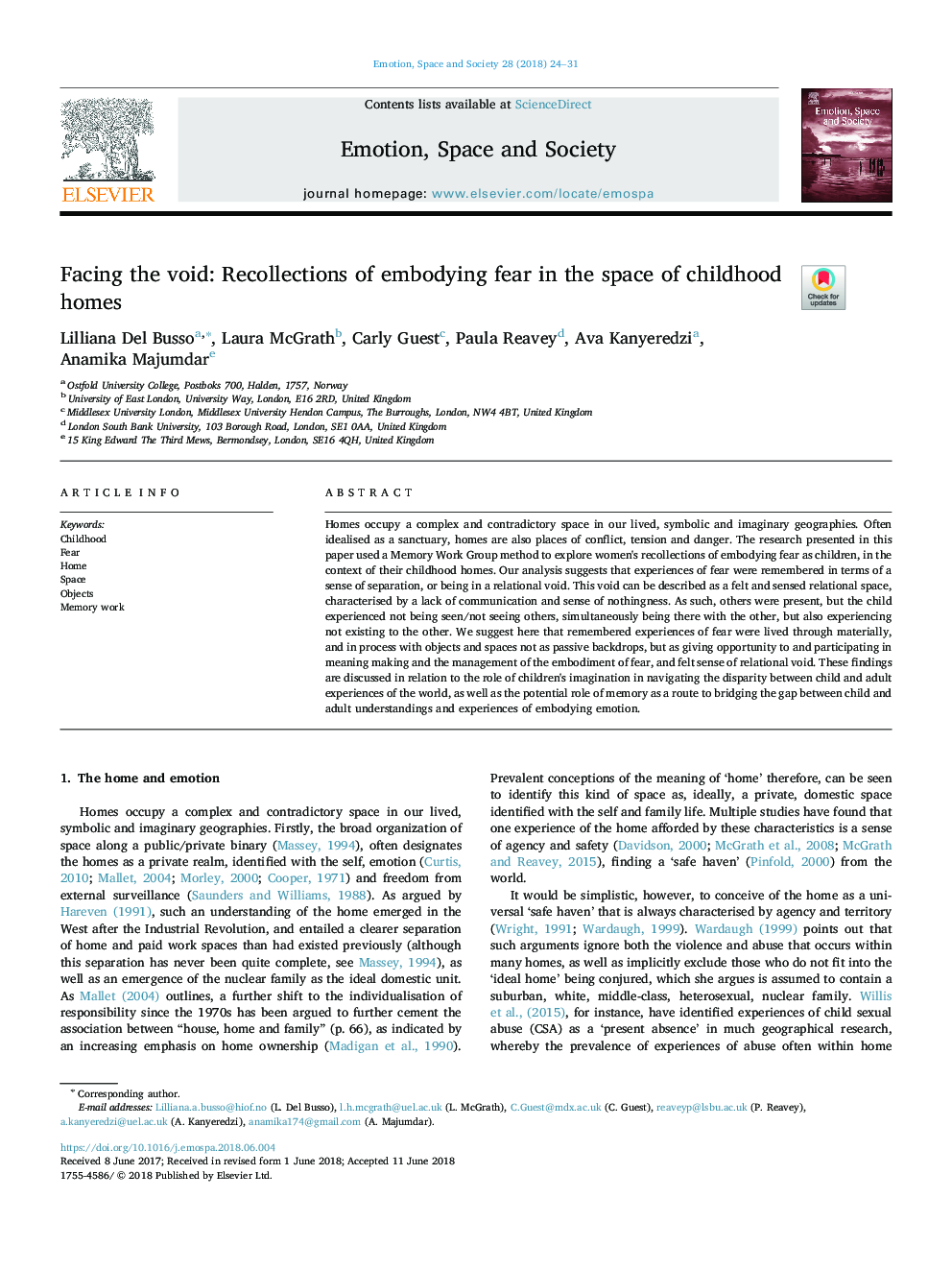| Article ID | Journal | Published Year | Pages | File Type |
|---|---|---|---|---|
| 7322743 | Emotion, Space and Society | 2018 | 8 Pages |
Abstract
Homes occupy a complex and contradictory space in our lived, symbolic and imaginary geographies. Often idealised as a sanctuary, homes are also places of conflict, tension and danger. The research presented in this paper used a Memory Work Group method to explore women's recollections of embodying fear as children, in the context of their childhood homes. Our analysis suggests that experiences of fear were remembered in terms of a sense of separation, or being in a relational void. This void can be described as a felt and sensed relational space, characterised by a lack of communication and sense of nothingness. As such, others were present, but the child experienced not being seen/not seeing others, simultaneously being there with the other, but also experiencing not existing to the other. We suggest here that remembered experiences of fear were lived through materially, and in process with objects and spaces not as passive backdrops, but as giving opportunity to and participating in meaning making and the management of the embodiment of fear, and felt sense of relational void. These findings are discussed in relation to the role of children's imagination in navigating the disparity between child and adult experiences of the world, as well as the potential role of memory as a route to bridging the gap between child and adult understandings and experiences of embodying emotion.
Related Topics
Social Sciences and Humanities
Psychology
Social Psychology
Authors
Lilliana Del Busso, Laura McGrath, Carly Guest, Paula Reavey, Ava Kanyeredzi, Anamika Majumdar,
